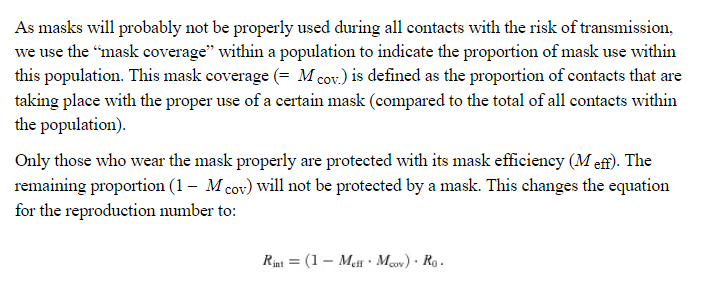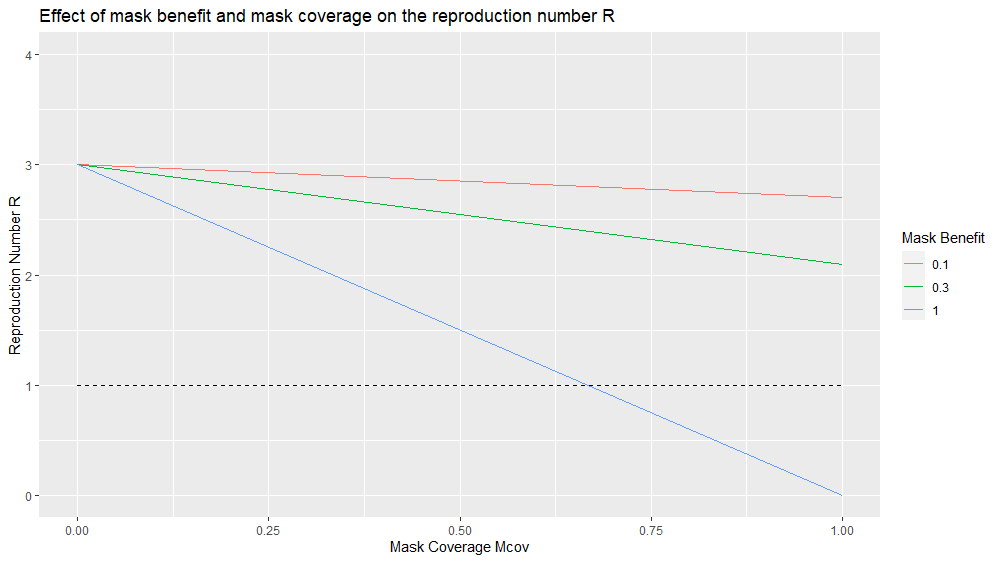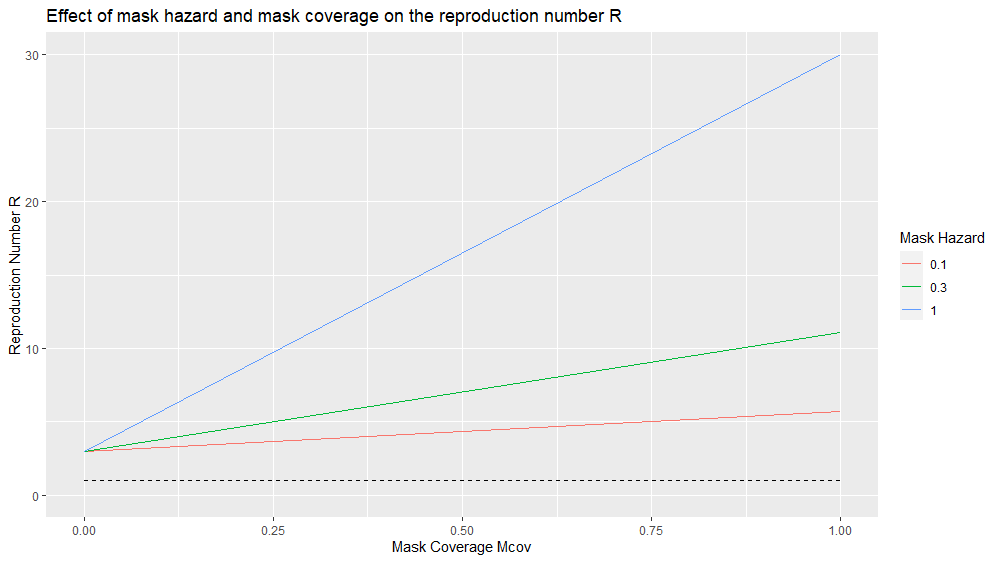1/ Thread on evaluating benefits vs harms of masks for infectious diseases & #covid19.
or
Why i think the claim that masks have equal probability of causing harm & benefit is mistaken.
or
Why i think the claim that masks have equal probability of causing harm & benefit is mistaken.
2/ General notice, I am not an epidemiologist!
This thread was inspired partly by conversations with @TheSGEM, and how clinicians approach balancing benefits/harms for various interventions.
This thread was inspired partly by conversations with @TheSGEM, and how clinicians approach balancing benefits/harms for various interventions.
3/ Medical interventions often involves uncertainty. If we think the direct risks of benefit vs harms are equal for an interventions, we call it clinical equipoise and it becomes a reason for further study.
4/ Mask interventions are slightly different than traditional medical interventions. They do not directly cause harm or benefit in themselves. Rather, they change the transmission risk of infections, which in turn changes the risk of infection related outcomes (i.e. death).
5/ If we think that masks of have an equal probability of increasing or decreasing an outcome risk, we are claiming that masks have an equal probability of increasing or decreasing transmission risk.
Here is a paper that looks at this! https://www.ncbi.nlm.nih.gov/pmc/articles/PMC7169241/">https://www.ncbi.nlm.nih.gov/pmc/artic...
Here is a paper that looks at this! https://www.ncbi.nlm.nih.gov/pmc/articles/PMC7169241/">https://www.ncbi.nlm.nih.gov/pmc/artic...
6/ The paper assigns values to probability the mask effectiveness (Meff), probability that masks will be used (Mcov), and the reproductive number (R0).
We will rename "mask effectiveness" to "mask benefit" going forward.
We will rename "mask effectiveness" to "mask benefit" going forward.
7/ Using the formula & assuming R0=3, we can plot change in R based on various probabilities of mask benefit (10%, 30%, & 100%) & mask coverage.
(Mask benefit is probability of reducing transmission risk).
At complete mask coverage, R lowers to 2.7, 2.1, & 0 respectively.
(Mask benefit is probability of reducing transmission risk).
At complete mask coverage, R lowers to 2.7, 2.1, & 0 respectively.
8/ Lets change the parameters, and a consider what happens when mask cause harm. We will use "mask hazard" as the probability of increasing transmission risk (b).
The formula has to be updated, and now looks as follows:
R=[1+Mhaz*Mcov(1/b-1)]*R0
(derivation below)
The formula has to be updated, and now looks as follows:
R=[1+Mhaz*Mcov(1/b-1)]*R0
(derivation below)
9/ Using the formula, assuming R0=3 & transmission risk b=10%, we can plot change in R based on various probabilities of mask hazard (10%, 30%, & 100%) & mask coverage.
At complete mask coverage, R increases to 5.7, 11.1, & 30 respectively.
At complete mask coverage, R increases to 5.7, 11.1, & 30 respectively.
10/ So we have a problem. No matter how hazardous masks might be, their is no way they can turn Covid19 into the equivalent of a fully airborne transmitted disease (i.e. R0 of 12~ measles), or worse!
https://en.wikipedia.org/wiki/Basic_reproduction_number">https://en.wikipedia.org/wiki/Basi...
https://en.wikipedia.org/wiki/Basic_reproduction_number">https://en.wikipedia.org/wiki/Basi...
11/ The reason hazard & benefit outcomes are so divergent is because the underlying transmission risk (b) is low. If it had been say 50%, then the change in R would have been symmetrical.
In our example we set b=10%, but in actuality it is much lower! https://jamanetwork.com/journals/jamainternalmedicine/fullarticle/2765641">https://jamanetwork.com/journals/...
In our example we set b=10%, but in actuality it is much lower! https://jamanetwork.com/journals/jamainternalmedicine/fullarticle/2765641">https://jamanetwork.com/journals/...
12/ Realistically, given our knowledge of the underlying disease epidemiology, the probability of harm vs benefit from masks cannot be equal.
Regardless of the potential number, mechanisms, or severity of mask harms, the hazards cannot escape basic functions of disease spread.
Regardless of the potential number, mechanisms, or severity of mask harms, the hazards cannot escape basic functions of disease spread.
13/ Of note, this is not to say masks have no harms!
Harms are still possible; this example just illustrates why risk is asymmetric, and mask interventions have a much higher probability of causing benefit rather than harm.
Harms are still possible; this example just illustrates why risk is asymmetric, and mask interventions have a much higher probability of causing benefit rather than harm.
14/ Code for graphs is below.
/end
https://github.com/rajking/CV_estimations/blob/master/ro%20masks.R">https://github.com/rajking/C...
/end
https://github.com/rajking/CV_estimations/blob/master/ro%20masks.R">https://github.com/rajking/C...

 Read on Twitter
Read on Twitter

![8/ Lets change the parameters, and a consider what happens when mask cause harm. We will use "mask hazard" as the probability of increasing transmission risk (b).The formula has to be updated, and now looks as follows:R=[1+Mhaz*Mcov(1/b-1)]*R0(derivation below) 8/ Lets change the parameters, and a consider what happens when mask cause harm. We will use "mask hazard" as the probability of increasing transmission risk (b).The formula has to be updated, and now looks as follows:R=[1+Mhaz*Mcov(1/b-1)]*R0(derivation below)](https://pbs.twimg.com/media/EYpuMOxXQAUA8z3.jpg)



